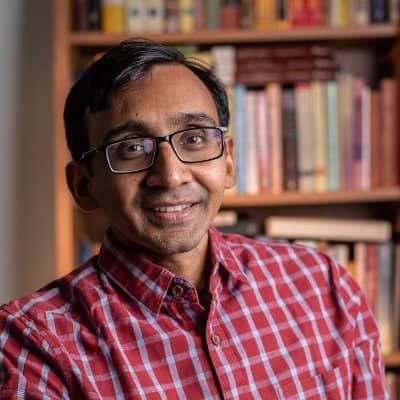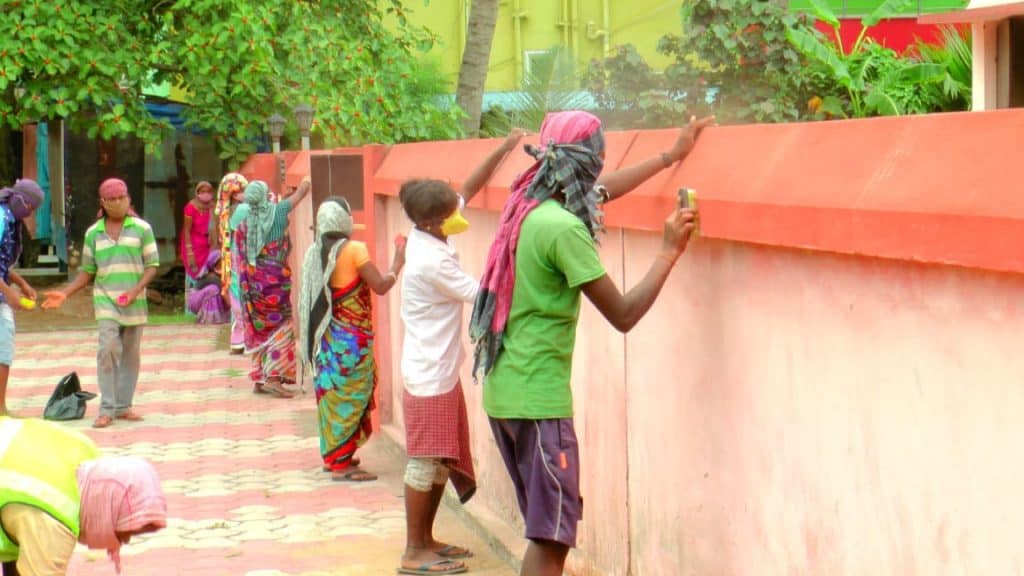In Part I and Part II of our focus on urban jobs and livelihoods, we had examined the need for and feasibility of an Urban Work Guarantee scheme. Citizen Matters also spoke to two eminent economists on the various issues concerning creation of such a scheme. Amit Basole, Director of the Centre for Sustainable Employment at APU (Azim Premji University), has been advocating an urban employment guarantee programme since 2019, and particularly since COVID lockdowns. Dr Jos Chathukulam is lead author of an EPW paper about Kerala’s experiment with its Ayyankali Urban Employment Guarantee Scheme.
That such a scheme is needed at the national level, both agree. On how to go about it, they have their own road map. The one view they have in common is that it should be decentralised and involve urban local bodies, NGOs and other civil society groups to make it work.
Excerpts from the interviews:
What are the fundamental requirements to introduce such a scheme?

Amit Basole: Some states have already been experimenting with urban employment guarantee in the last one year and we can learn what works and what doesn’t. For example, Odisha has been relying heavily on self-help groups, as not all ULBs’ have the capability to do this by themselves. Kerala might be using its Kudumbashree network. The first steps are deciding what kind of works to undertake, identifying those who want to work, allocate the materials, etc. (In MNREGA, the panchayat identifies the works, and the rozgar sevak and BLOs are involved in procuring the materials and issuing job cards).
In Odisha, my impression is that the SHGs and local slum development associations have done both the proposing of works and identifying those willing to work and are executing the programme too. But the potential downside is that SHG members may get preference and not everyone who’s willing to work would be able to register.

Dr Jos Chathukulam: Poor design and implementation has been the issue in Kerala. Many eligible workers, even councillors, are unaware of the job guarantee programme. It is important to identify the right beneficiaries. In Kerala, the number of educated unemployed are also quite high in urban areas, so the programme should have work for them as well as unskilled workers. In urban areas, many projects (such as cleaning of canals) require expertise in planning and design. Hence academic institutions in the ULB can be roped to develop decentralised work plans. Students in colleges should be roped in to identify beneficiaries at the local level. All towns in India have academic institutions/colleges, so this should be easily implementable at the national level.
What would be the role of state govts and municipal corporations in implementation?
Amit Basole: The national programme could be introduced in a phased manner, first in places where it has a better chance of working. The concern is whether the small-town ULBs have the resources to do this. Currently, because of COVID, local governance is quite severely stretched. So right now, perhaps the best way is to select the worst-affected districts first, just as how MGNREGA was introduced initially, and then giving that ULB the resources to make it work.
Dr Jos Chathukulam: Ideally, urban employment guarantee plans should be developed at the local level, and then scaled up, like MGNREGA was. Many ULBs have the finances to run the programme to some extent, but often the issue is poor financial management. At the ULB level, it doesn’t have to be a full-fledged programme right from the start. Maybe few works could be identified, and the number of person-days need be just 50 or even 25 initially. Depending on the learnings from this, the programme could be scaled up. This was the case with many programmes in Kerala like palliative care and even Kudumbashree. ULBs can customise the programme, instead of following a top-down model”.
What about funding support from the state and centre?
Amit Basole: MNREGA has given us an understanding of how state-centre division of resources could work in a programme like this. But there are problems there. For example, the labour budget in MNREGA is completely the Centre’s responsibility, and that creates some tension. Centre leans on the states to not register enough people because they don’t have enough money, while states are keen to register more people. That could happen here too.
But we can’t hold back because of resources. It is going to be a big programme, so the budget needs to be at least as much as MNREGA if not more, for it to be successful. Compared to MNREGA, the wages and capital requirements would be higher in urban areas, even though the number of workers would be less.
Resource shortage makes it necessary to implement this in phases. And also because we don’t know enough about the urban labour market. With phased introduction, learnings along the way can be used to modify the programme as needed. The cost should be shared between the centre, state and ULB; larger ULBs can give potentially more finances; some smaller-town ULBs may require help from Centre and state. But considering that states’ finances are stretched, the Centre will have to bear most of the cost.

How can beneficiaries be better targetted?
Amit Basole: We can start with core public works, and there, only those people who need the work (like in MNREGA) will register. Still, we would need to do some work for awareness generation. We would also need the partnership of NGOs and other civil society organisations to come up with work proposals on what the community needs in different areas. Once people come forward, their eligibility would depend on the selection criteria.
We have seen variations in eligibility criteria of various state-level urban employment guarantee programmes, based on domicile status: whether a person has to be a resident of the ULB or ward, whether they should submit voter ID or Aadhaar or whether they should be more relaxed, etc. We have suggested having a larger list of acceptable documents so that people can register even if they are not long-time residents.
The objection to this is whether it will encourage more migration to cities: ULBs and urban management experts should think this through during the design stage. Also, such migration is more likely if the programme wage is too high. So the wage will have to be close to the current casual wage rate in that particular town.